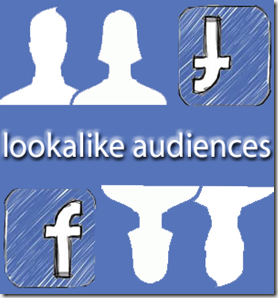Are you using Facebook for business? While many small businesses are entering into the fray, they are using it in a very ‘traditional’ or ‘push’ marketing way. They understand that Twitter has potential for them to connect with their customers, but they aren’t quite sure how to use it and how they can benefit from it. As a result, many fall off the map and end up wasting time and resources with little to no benefit. Rather than rushing into using Facebook without knowing exactly why, your business should consider a more strategic approach.
Coming up with a strategic approach to using Facebook will compliment all other marketing efforts and provide customers with a valuable online resource. The best news? It’s free! All Facebook marketing requires is patience and consistency. Here are ten tips for how to successfully use Facebook for your business.
1. Identify your audience: Do you know who your customer is? Take time to identify your target customer and research their shopping habits. Audit how they use Facebook, the type of content they 'like' and read, how actively they engage online. Once you create your ideal consumer persona you can begin to create a marketing strategy.
2. Create your business page: Make sure that when you create your Facebook page that it adequately reflects the look and feel of your website. Also, identify keywords that describe your business and see what type of keywords your competitors are using to describe their business. Your Facebook profile should include those keywords so new and existing customers can find your page.
56% of customers say that they are more likely to recommend a business or brand after becoming a fan.
3. Set goals: Nothing feels better than crossing a to-do off your list and achieving a goal. Set daily, weekly, and monthly goals. Come up with a cadence for how often you post and what time you post. Also, figure out the type of content to post. Will you be posting articles, photos, videos or all of the above? For example if you have a company blog, you can post the links to your Facebook page. Setting goals will set the pace for your success and achieving smaller goals will keep you motivated and focused.
4. Enlist page administrators: Facebook page maintenance does not need to be restricted to one person. If you have a couple employees or a team get them involved. Having more than one voice contributing to Facebook will make your content and copy more interesting and personal.
5. Create a places page: If your small business has a physical location, use the “Check-In” feature to claim its “Places Page.” Your customers will then be able to “check-in” with their mobile devices, which will automatically post to Facebook, letting all their friends know that they support your business. Best of all, it provides free advertising.
90% of people trust peer recommendation via social media.
6. Create a content calendar: The easiest way to streamline post activity on your business page is to create a simple content calendar. Content moves quickly on Facebook. Figure out when your customers are the most active on Facebook and plan on posting then to increase the chances of your post being seen, liked, and shared. Set aside time weekly to research post ideas and then disperse them throughout the week. You may even want to experiment with having daily themes – overtime you will develop a strategy that works best for you and your target consumer. Have fun and do not be afraid to experiment. Be sure to vary your post type to include video, links, and polls – different types of content will appeal to different people.7. Email your database: Once your business page is up and running, send an email to your database. Be sure to let them know that liking your page will give them access to special events, promotions, and insider tips and tricks. Promote the exclusivity and how your Facebook page will add value to your customers.
8. Promote your page and posts: Many people create fantastic Facebook business pages and then forget to promote them. Do not make that mistake! Add Facebook links to emails, add like buttons to website, blog or any banners marketing campaigns. You can also promote posts to your friends and friends of friends so get more views and likes.
9. Monitor your success: All Facebook business pages are equipped with an analytics feature called Facebook Insights. Insights is available to page administrators and is an easy way to track fan engagement and post success. It's important to look at views, Regularly check Insights to see how your page is performing and make adjustments where needed. Two insights that you should pay attention to day-to-day are "Lifetime Likes" and "Lifetime Total Subscriptions." This will show you if your fan base is converting or not.
10. Bonus Tip: A Facebook business page is a great place to show off your superior customer service skills. Respond to all customer comments in a timely manner and be sure to maintain a positive professional tone. Your Facebook page is an extension of your brand experience so be sure to wow your customers every time.
There is no one size fits all formula for using Facebook for business. Start small, experiment, post regularly, and actively strive to engage with your customer
orginal article here: http://socialmediatoday.com/alexhisaka/1203526/how-use-facebook-business










 we’re showing a lot better . . . The biggest ways we’re going to do
this are by improving targeting and relevance so we can show everyone
content that they care more about and by designing better ad products
that aren’t just about links and text and images. For targeting, I’m
most excited about the work that we’re doing on Custom Audiences.”
we’re showing a lot better . . . The biggest ways we’re going to do
this are by improving targeting and relevance so we can show everyone
content that they care more about and by designing better ad products
that aren’t just about links and text and images. For targeting, I’m
most excited about the work that we’re doing on Custom Audiences.”